
Albert I of Habsburg was a Duke of Austria and Styria from 1282 and King of Germany from 1298 until his assassination. He was the eldest son of King Rudolf I of Germany and his first wife Gertrude of Hohenberg. Sometimes referred to as 'Albert the One-eyed' because of a battle injury that left him with a hollow eye socket and a permanent snarl.

Rudolf I was the first King of Germany from the House of Habsburg. The first of the count-kings of Germany, he reigned from 1273 until his death in 1291.

Lotharingia was a medieval successor kingdom of the Carolingian Empire. It comprised present-day Lorraine (France), Luxembourg, Saarland (Germany), Netherlands, and the eastern half of Belgium, along with parts of today's North Rhine-Westphalia (Germany), Rhineland-Palatinate (Germany) and Nord (France). It was named after King Lothair II, who received this territory after the Kingdom of Middle Francia of his father, Lothair I, had been divided among his three sons in 855.
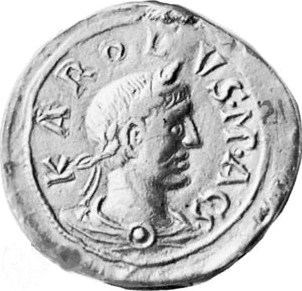
Charles III, also known as Charles the Fat, was the emperor of the Carolingian Empire from 881 to 887. A member of the Carolingian dynasty, Charles was the youngest son of Louis the German and Hemma, and a great-grandson of Charlemagne. He was the last Carolingian emperor of legitimate birth and the last to rule a united kingdom of the Franks.

The Kingdom of the Franks, also known as the Frankish Kingdom, the Frankish Empire or Francia, was the largest post-Roman barbarian kingdom in Western Europe. It was ruled by the Frankish Merovingian and Carolingian dynasties during the Early Middle Ages. Francia was among the last surviving Germanic kingdoms from the Migration Period era.
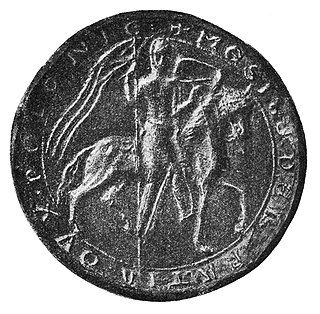
Mieszko III the Old, of the Piast dynasty, was Duke of Greater Poland from 1138 and High Duke of Poland, with interruptions, from 1173 until his death.

Saxe-Altenburg was one of the Saxon duchies held by the Ernestine branch of the House of Wettin in present-day Thuringia. It was one of the smallest of the German states with an area of 1323 square kilometers and a population of 207,000 (1905) of whom about one fifth resided in the capital, Altenburg. The territory of the duchy consisted of two non-contiguous territories separated by land belonging to the Principality of Reuss-Gera. Its economy was based on agriculture, forestry, and small industry. The state had a constitutional monarchical form of government with a parliament composed of thirty members chosen by male taxpayers over 25 years of age.
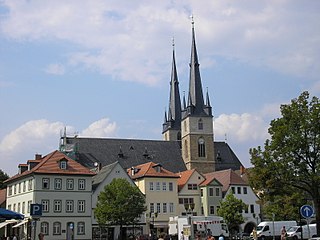
Saalfeld is a town in Germany, capital of the Saalfeld-Rudolstadt district of Thuringia. It is best known internationally as the ancestral seat of the Saxe-Coburg and Gotha branch of the Saxon House of Wettin.

The Duchy of Bavaria was a frontier region in the southeastern part of the Merovingian kingdom from the sixth through the eighth century. It was settled by Bavarian tribes and ruled by dukes (duces) under Frankish overlordship. A new duchy was created from this area during the decline of the Carolingian Empire in the late ninth century. It became one of the stem duchies of the East Frankish realm which evolved as the Kingdom of Germany and the Holy Roman Empire.

The Ernestine duchies, also known as the Saxon duchies, were a group of small states whose number varied, which were largely located in the present-day German state of Thuringia and governed by dukes of the Ernestine line of the House of Wettin.
Gundoin was the first Duke of Alsace in the middle of the seventh century. He was a Frankish nobleman from the Meuse-Moselle basin. He was, according to the author of the Vita Sadalbergae, an "illustrious man, opulent in wealth and fame according to the highest secular dignity and skilled in courtly affairs."
The Duchy of Alsace was a large political subdivision of the Frankish Empire during the last century and a half of Merovingian rule. It corresponded to the territory of Alsace and was carved out of southern Austrasia in the last decade of the reign of Dagobert I, probably to stabilise the southern reaches of Austrasia against Alemannia and Burgundy. By the late Middle Ages, the region was considered part of Swabia.
The Etichonids were an important noble family, probably of Frankish-Burgundian origin, who ruled the Duchy of Alsace in the Early Middle Ages. The dynasty is named for Eticho, who ruled from 673 to 690.

The Ludovingians or Ludowingians were the ruling dynasty of Thuringia and Hesse during the 11th to 13th centuries.
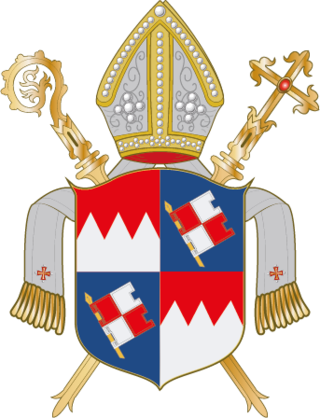
The Diocese of Würzburg is a Latin Church diocese of Catholic Church in Germany. The diocese is located in Lower Franconia, around the city of Würzburg, and the bishop is seated at Würzburg Cathedral. Founded in 741, the diocese lost all temporal power after the Napoleonic wars.
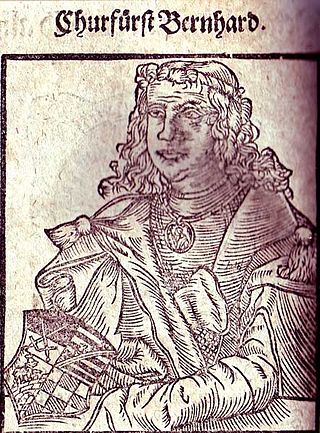
Bernhard, a member of the House of Ascania, was Count of Anhalt and Ballenstedt, and Lord of Bernburg through his paternal inheritance. From 1180 he was also Duke of Saxony.
The Duchy of Thuringia was an eastern frontier march of the Merovingian kingdom of Austrasia, established about 631 by King Dagobert I after his troops had been defeated by the forces of the Slavic confederation of Samo at the Battle of Wogastisburg. It was recreated in the Carolingian Empire and its dukes were appointed by the king until it was absorbed by the Saxon dukes in 908. From about 1111/12 the territory was ruled by the Landgraves of Thuringia as Princes of the Holy Roman Empire. When Frederick IV, the last independent ruler of Thuringia died in 1440, the territory passed to his nephew, the saxon elector Frederick II.
The German royal election of 1002 was the decision on the succession which was held after the death of Emperor Otto III without heirs. It was won by Duke Henry IV of Bavaria among accusations of uncustomary practices.

Bilhild was a Frankish noblewoman, remembered as the founder and abbess of the monastery of Altmünster near Mainz, and venerated locally as a saint, on Nov. 27.
Gailana or Geilana was a duchess consort of Thuringia by marriage to Hedan I and Gozbert. She reportedly ruled as duchess after the death of her spouse in 689.













